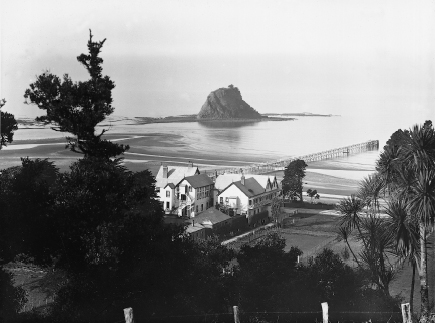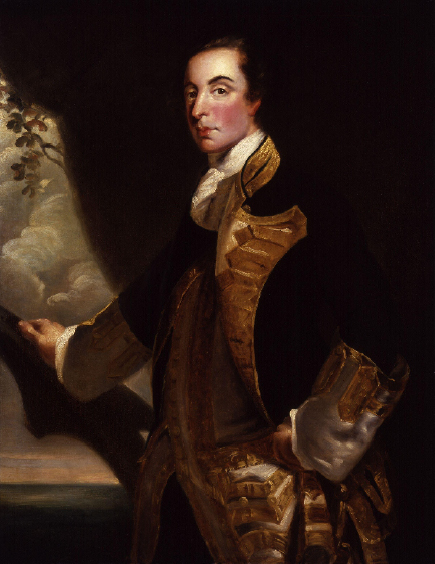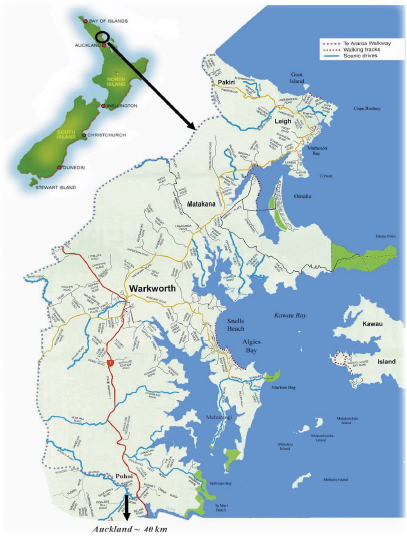Pakiri–Pūhoi naming rites

Mahurangi Island: Once applying to a much greater area, Mahurangi in general use has contracted to the harbour, river and hydrological catchment of that name, five kilometres north of the sea stack that was first to bear the name. photographer Henry Winkelmann 1907
The region was once called Mahurangi.
Not the Mahurangi River—at the time of European settlement it was called Waihē. For Māori, Mahurangi was the fortified sea stack off Waiwera, and its immediate hinterland. For the want of pre-existing name for it, European settlers soon extended Mahurangi to refer to the wider region. Although the Mahurangi Purchase, completed in 1854, spanned from Te Arai Point to the northern shoreline of the Waitematā, the area referred to by the settlers as Mahurangi was much smaller, as Dr Ronald Locker states:
The Bay (or Bight) of Mahurangi meant to early [European] mariners, the enclosed waters from Kawau to Tiritiri Matangi.
When a post office was established at founder of Warkworth John Brown’s house, it was officially the Mahurangi Post Office, despite the town carrying its colonial moniker from its inception five years earlier. Since then, with the notable exception of it being the name for the town’s college, Mahurangi has been reduced to being the name for the hydrological catchment, both branches of its principal river, and the harbour. And the island off Waiwera, though few visitors to there or to Wenderholm would be aware of the fact.

Great and Irrelevant: British Naval hero George Brydges Rodney may have deserved the honour of having a cape named for him, but as vain as he was reputed to be, he would probably not have begrudged the cape’s hinterland reverting to an indigenous name. Besides, the 1st Baron Rodney also has had at least five warships, a public school house, a bay, a style of boat and a rum—Admiral Rodney Extra Old—honour his memory. image Wikipedia
Because of the lamentably human tendency of homesick settlers, and even their offspring, to hark back to their motherland when naming towns and regions, what might have been Mahurangi became Warkworth, and what might have been Tamahunga County became Rodney. The county, of course, took its name from Cape Rodney, named by Captain James Cook in 1769 for British naval hero George Brydges Rodney. However as name for the region, Rodney has failed to endear itself to its residents in the intervening 135 years. Research conducted by the New Zealand Tourism Research Institute found that only 28% of residents in Matakana or its vicinity volunteered Rodney as a name for the Pakiri–Pūhoi visitor strategy area, as opposed to 49% volunteering Matakana. Rodney rated a little higher amongst residents in Warkworth or its vicinity but, at 36%, not by much. What is somewhat surprising is that Rodney, there, beat out Mahurangi by 12 percentage points. Mind, the small number of people questioned means that these percentages can be considered indicative only.
Warkworth, in Warkworth and its vicinity, was volunteered by a mere 11% of respondents, which adds support to those who feel the town is missing the tour bus by failing consolidate on the melodious Mahurangi, the name of town’s defining river, and of the first natural east coast harbour north of the metropolis.
In March 2009, the Royal Commission on Auckland Governance when recommending the establishment of six local councils, settled on Māori names for only five of them:
The commission has been unable to identify a suitable Māori name for Rodney Local Council but recommends that one be identified after consultation with mana whenua.
Although the government rejected the six-local-council scheme in favour of 21 local boards, the new Rodney Board area proved to be almost as geographically unwieldy as the old Rodney District, and thus still lacking a strongly contending Māori name. In June 2010, the Mahurangi Magazine nailed its colours to Tamahunga as the name of the board area, as the strongest geographic contender. Mahurangi is problematic because of competition from Aotearoa’s largest harbour, the Kaipara. Kaipara is problematic, given that most of the Kaipara Harbour’s famously long shoreline is outside the Auckland Council boundary. Mount Tamahunga, overlooking most of the territory is a gift. Meantime, this magazine suggested Mahurangi for central swath of the board area, which instead carries the unlovely title Warkworth Subdivision.
With Monday’s publication of the draft Pūhoi to Pakiri Region Visitor Strategy 2012–2017 document, the pressure is now on decide a name for that area, which is most, but not all of the Warkworth Subdivision. The option of running without a firm name is complicated by the desire to settle on a name for the website. The document recommends…
the development of a site that works on different layers: As an information resource for the visitor, as a linkage tool to other businesses within the region, and as a resource to strengthen visitor information centres as a business and community resource.
Establishing the website is the second action proposed, after setting up an incorporated society to implement the proposed strategy. However, the name of the incorporated society could readily be changed, and the website for that matter—it is a trivial matter to redirect internet users from say www.Puhoi-to-pakiri.org.nz to www.tamahunga.org.nz, without their having to having to do anything different.
But before Tamahunga could be chosen, and the Mahurangi Magazine suggests that it is the most natural name for the Pakiri–Pūhoi area, an energetic period of meaningful consultation would first be required. Sadly, consultation is something that is rarely done well. Deliberative democracy, worldwide, has largely failed to deliver, the Power Inquiry into the state of British democracy stating:

Study Area: The region addressed by the draft Pūhoi to Pakiri Region Visitor Strategy 2012–2017. map New Zealand Tourism Research Institute
Instead, the decision will be taken by the Pūhoi to Pakiri steering committee, and probably quite soon—feedback on the draft visitor strategy has been requested by 19 September, a bare two weeks after Monday’s presentation. At present, the leading contender is probably Pūhoi to Pakiri. Although that title would be straightforward and relatively non-contentious, the weakness is that it leaves out the name that has developed considerable traction in the wider Auckland region: Matakana. Undoubtedly, it would suit businesses based in the Matakana area, particularly the wine growers instrumental in successfully branding Matakana as a wine subregion.
When the business people concerned employed the hackneyed device of adding Coast to Matakana, they did so to fill the vacuum in geographical nomenclature ignored by a century of local government. But more recently, had the Rodney District Council been working in the best interests of its residents when the Royal Commission on Auckland Governance was deliberating, issues such identifying communities of interest might have been addressed with some authority. Shamefully, the district council squandered its time in an ideologically motivated scramble to secede from regional government, which was doomed before it began. Worse, when it suited its secessionist agenda, the council was prepared to play with alternative names—attempting to portray Rodney as ‘Cerf City’ on Wellington billboards, without a modicum of mandate from Rodney ratepayers.
The essence of the visitor strategy—more cohesion and collaboration across the Pakiri–Pūhoi region—is entirely sound. And it could work quite well even without branding the area—the area is already too popular as far as some residents are concerned. There is no need for indecent haste by the steering committee to impose a name on the people of the area—as already mentioned, Pūhoi to Pakiri Incorporated can easily become Mahurangi Incorporated, Tamahunga Incorporated or Matakana Incorporated.
Perhaps the most useful interim name is Mahurangi–Matakana. It has the virtue of meaning more to more people than either name on its own, given that Rodney is a non-starter, including because it was volunteered by only 10% people from the Matakana business community. Then, as part of engaging the community in the visitor strategy, a leisurely and dignified discussion could take place to determine whether Mahurangi–Matakana is adequate, or whether residents could become enthused about all being Mahurangi, Matakana, Tamahunga or some other name or combination of names. Handled sensitively, and without undue pressure, it could be a fine opportunity for residents to conduct a civilised discourse. This process could well be the first task set for the regional coordinator of tourism, the fulltime role recommended in the draft strategy. It would certainly ensure that the person chosen for the position quickly became well grounded in the community from the outset. So rather than be seen as a cost in establishing the facilitating body, the need for consultation on the name should be seen as an opportunity to get buy-in to the initiative, and to sign up subscribers—the exercise should pay for itself.
Another virtue of Tamahunga is the not inconsequential consideration of inclusiveness. Tamahunga has the advantage that the website could leave open the possibility of including destinations north of Dome Valley: North of Tamahunga. This would avoid leaving destinations west of Pakiri—Wellsford and Te Hana—out in the cold. Chances are it would also feel more inclusive for Pūhoi people.
If after a year of gentle deliberation a clear and compelling alternative failed to emerge, the interim Mahurangi–Matakana would be an entirely workable long-term name, albeit less pure than a single name with impeccable geographic and historical credentials.
Otherwise, in the admittedly low possibility of a public consensus emerging for Mahurangi, the Mahurangi Magazine here and now offers to donate www.mahurangi.org.nz (the magazine will cheerfully replace it with some other) to…
…to Mahurangi Incorporated!
Recycling The title of this piece, Naming Rites, is courtesy of the wit of Mark Kirby, who coined it for use in another context.
Now published Draft Pūhoi to Pakiri Region Visitor Strategy 2012–2017
Previously published The Summary of Findings, Pūhoi to Pakiri Area Visitor Strategy Research Programme: Visitor, Business and Community Surveys

Limiting the geographic scope of this Puhoi-Pakiri strategy ignores the natural continuation of the alternative (to State Highway 1) eastern coastal route through to Mangawhai, Mangawhai Heads, Langs Beach, Waipu Cove and Waipu that many people (especially international visitors) would prefer to take. Many travellers coming to New Zealand seem to expect that the further they go, the better their destination is going to be and accordingly set destinations that are as far as they can reasonably travel in a single trip i.e. from Auckland to the Bay of Islands, and then on to Cape Reinga for the next trip. They are often unaware of and disinterested in our beautiful area and are unlikely to take a detour off the main highway because it is not widely known that this route is an attractive alternative to travel on to points farther north from Pakiri. The absence of bus services through this route is also a major barrier impeding the development of tourism here. Working with the communities along the route all the way up to Waipu would help to make better provision for visitors who are planning to travel further afield.
I do like this argument. We should certainly be aware of and consider the historical names of this region. We also need to be aware from a tourism stance that we are competing with the pulling power (in terms of images conjured) of names like The Bay of Islands. cf. ‘The Tamahunga Bays’ or ‘The Tamahunga’ What does Tamahunga mean?